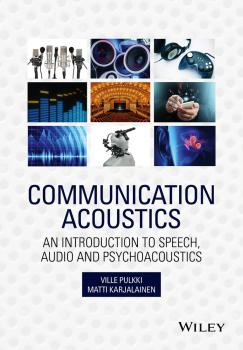ТОП просматриваемых книг сайта:















Ville Pulkki
Список книг автора Ville PulkkiАннотация
A comprehensive guide that addresses the theory and practice of spatial audio This book provides readers with the principles and best practices in spatial audio signal processing. It describes how sound fields and their perceptual attributes are captured and analyzed within the time-frequency domain, how essential representation parameters are coded, and how such signals are efficiently reproduced for practical applications. The book is split into four parts starting with an overview of the fundamentals. It then goes on to explain the reproduction of spatial sound before offering an examination of signal-dependent spatial filtering. The book finishes with coverage of both current and future applications and the direction that spatial audio research is heading in. Parametric Time-frequency Domain Spatial Audio focuses on applications in entertainment audio, including music, home cinema, and gaming—covering the capturing and reproduction of spatial sound as well as its generation, transduction, representation, transmission, and perception. This book will teach readers the tools needed for such processing, and provides an overview to existing research. It also shows recent up-to-date projects and commercial applications built on top of the systems. Provides an in-depth presentation of the principles, past developments, state-of-the-art methods, and future research directions of spatial audio technologies Includes contributions from leading researchers in the field Offers MATLAB codes with selected chapters An advanced book aimed at readers who are capable of digesting mathematical expressions about digital signal processing and sound field analysis, Parametric Time-frequency Domain Spatial Audio is best suited for researchers in academia and in the audio industry.
Аннотация
In communication acoustics, the communication channel consists of a sound source, a channel (acoustic and/or electric) and finally the receiver: the human auditory system, a complex and intricate system that shapes the way sound is heard. Thus, when developing techniques in communication acoustics, such as in speech, audio and aided hearing, it is important to understand the time–frequency–space resolution of hearing. This book facilitates the reader’s understanding and development of speech and audio techniques based on our knowledge of the auditory perceptual mechanisms by introducing the physical, signal-processing and psychophysical background to communication acoustics. It then provides a detailed explanation of sound technologies where a human listener is involved, including audio and speech techniques, sound quality measurement, hearing aids and audiology. Key features: Explains perceptually-based audio: the authors take a detailed but accessible engineering perspective on sound and hearing with a focus on the human place in the audio communications signal chain, from psychoacoustics and audiology to optimizing digital signal processing for human listening. Presents a wide overview of speech, from the human production of speech sounds and basics of phonetics to major speech technologies, recognition and synthesis of speech and methods for speech quality evaluation. Includes MATLAB examples that serve as an excellent basis for the reader’s own investigations into communication acoustics interaction schemes which intuitively combine touch, vision and voice for lifelike interactions.


